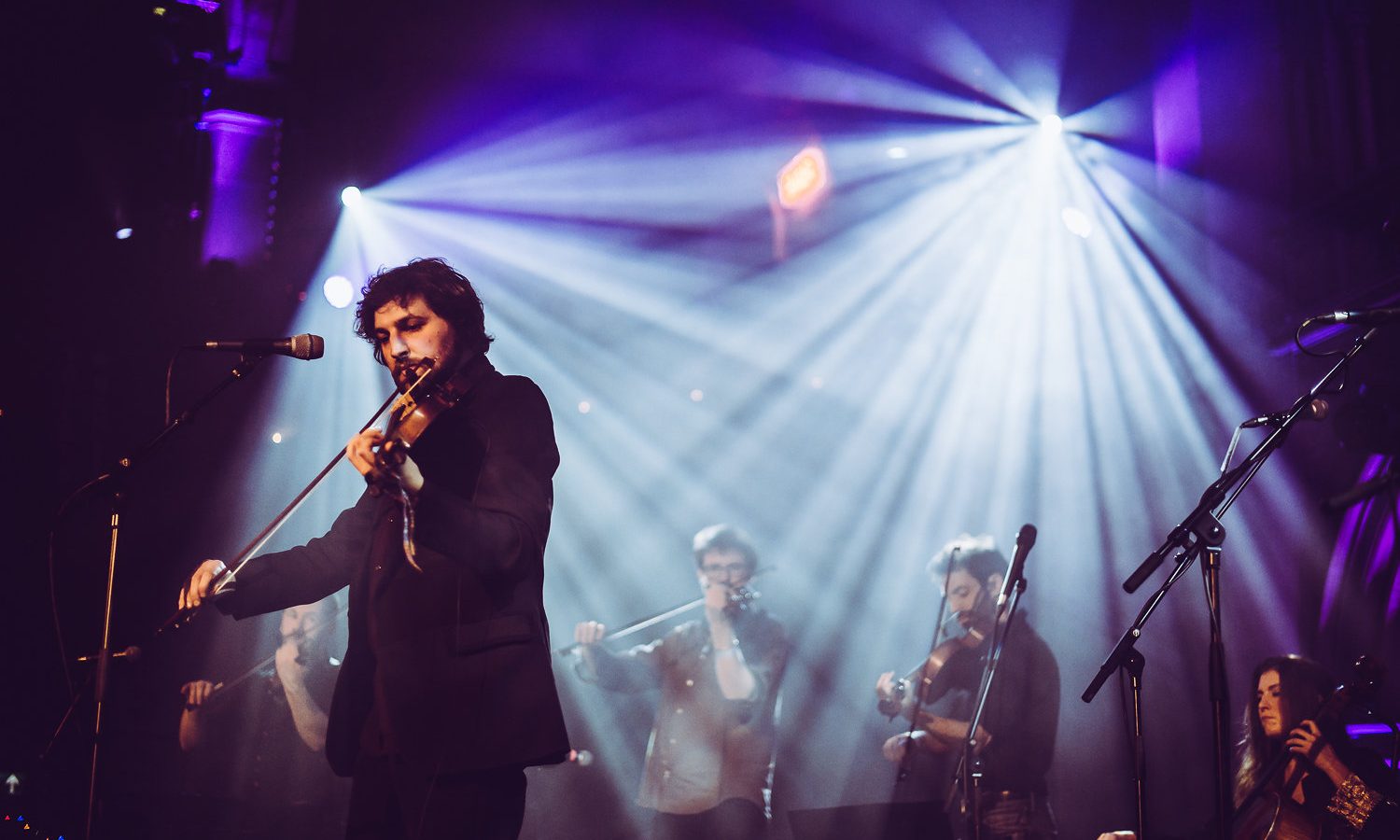
Band of Burns’ nod to Scotland’s beloved Robert Burns
For more than two hundred years, 25th January has been a night of whisky toasts, hearty haggis suppers, traditional Scottish music and vernacular poetry – all in the name of the great 18th century Ayrshire-born poet, Robert Burns. Perhaps Scotland’s best-known poet, he wrote in numerous styles as well as collecting folk songs and composing tunes of his own, making significant and lasting contributions to Scottish culture in the process.
It’s understandable therefore that Band of Burns, a collective of twelve outstanding musicians hailing from Scotland, Ireland, England, Wales, and Turkey, would base their act upon the work he created and the values he championed. Their show at Band on the Wall just a few days before Burns night, will involve renditions of his finest and most notable work, alongside that of other poets and writers and compositions of their own, all of which has been perfected during a month of tireless rehearsal.
So who was Robert Burns? Born in 1759 to farming parents, his childhood was one involving hard manual labour, but also formal education, through which his obvious interest in literature was nurtured. Described as ‘a voracious reader,’ he became aware of the work of writer Robert Fergusson, a tradition-steeped style which inspired Burns’ efforts to carry forward and widen the range of vernacular Scots poetry. His first collection, entitled Poems, Chiefly in the Scottish Dialect, was published in 1786 and heralded an immediate success, making Burns famous across Scotland before he turned thirty. A decade later, Burns’ collaboration with Edinburgh-based musician James Johnson gave the world the first volume of The Scots Musical Museum, ultimately a six volume, six hundred song collection containing works composed and collected by Burns, including New Year’s Eve staple Auld Lang Syne and My Love is Like a Red, Red Rose.
At the time of his death in 1796, his broad-ranging work: from satires and ballads to romantic songs and poetry, had already earned him widespread renown. It encapsulated his patriotism, his thoughts on society, politics, love and nature. Looking back upon it today, it’s difficult to believe that one individual, armed with resources typical of any 18th century creative, could be responsible for such a body of work. It’s part of what makes his celebration so important.
Band of Burns have been performing together for a number of years and in 2017, recorded an astonishing album at London’s Union Chapel, which represents the broad and beautiful nature of their musical Burns celebration. There features The Quiet Joys of Brotherhood, a song rooted in Celtic folk music that fans of Sandy Denny and Richard & Mimi Farina will be familiar with, as well as arrangements backing My Love is Like a Red, Red Rose and a rendition of the wonderful Now Westlin Winds. Rioghnach Connolly’s beautiful voice, sometimes accompanied and sometimes part of a choir of voices, leads the songs powerfully, while the sensitive arrangements and emotive playing of the band elevate the material to the highest plateau.
Their sets reflect the wide influence of Burns and the tradition of which he is part. This years set will include plenty of Burns brilliance, but also poetry by Nazim Hikmet, as the different passions and heritages of the band members come through. Expect next Tuesday’s show to be a life-affirming musical and poetic experience and make sure you check out Band of Burns’ album before arriving, to prepare yourself appropriately for the majestic performance that will take place.







